The first, major exhibition onmedieval art in Pistoia: it’s Medieval in Pistoia. Crossroads of Artists between Romanesque and Gothic, an exhibition curated by Angelo Tartuferi, Enrica Neri Lusanna, and Ada Labriola that, from Nov. 27, 2021 to May 8, 2022, is scheduled at the Tuscan city’sAntico Palazzo dei Vescovi and Museo Civico. With more than 60 works including paintings, sculptures, masterpieces of miniature and goldsmithing, the exhibition takes the public to discover the artistic and cultural fabric of one of the most vibrant centers of the European Middle Ages.
Pistoia became a center of international significance when, at the behest of Bishop Atto, the relic of St. Jacopo arrived in the city in 1140, placing the Tuscan municipality among the most important European pilgrimage routes. The exhibition, on the occasion of theIacobean Year, illustrates for the first time the extraordinary panorama of the arts in Pistoia from the 12th to the early 15th century, revealing the leading role the city assumed in the Middle Ages in the field of figurative arts. Composed of six sections, Middle Ages in Pistoia has a chronological progression that begins with the arrival of the relic of St. Jacopo in the city, moving on to the 13th century when Pistoia conquered a leading role in the international figurative arts scene, and then to the 14th century with illustrious presences in the city and the beginning of a strong figurative identity. Even in the Late Gothic season, despite the loss of political autonomy and the final submission to Florence, the city maintained its distinctive features in the panorama of Tuscan painting. Moreover, the exhibition ideally expands beyond the confines of the museum spaces that host it through a widespread view of the furnishings in the city’s churches.
In the medieval period Pistoia compared itself with the major centers of Tuscany, thanks to the importance of its monuments, the conspicuous commissioning of their furnishings and a cultural vocation of international scope. A forerunner was Bishop Atto, who by welcoming in 1140 the relic of the apostle Jacopo da Compostela included Pistoia in the European network of pilgrimage routes. The city enjoyed the presence of enlightened patrons at the time, attracting figures such as sculptors Guglielmo, Guido da Como, Nicola and Giovanni Pisano, who left foundational masterpieces of Italian art history in Pistoia. Accompanying the works of these sculptors is the most impressive of the works of goldsmithing, the ideal seal of the exhibition: theSilver Altar of San Jacopo, which makes Pistoia a central hub for precious metalworking.
The miniature (thanks to the activity of the workshop of the Master of Sant’Alessio in Bigiano, and in the 15th century by the elegance of the illustrations of the Master of the Bracciolini Chapel in the Divine Comedy preserved in the National Library in Naples) also experiences a period of great vivacity in Pistoia. At the end of the 12th century, two leading figures in painting were also in town: the Master of the Crucifix No. 434 in the Uffizi(click here to learn more about this artist), on whose work Coppo di Marcovaldo must have been trained, and the Master of Santa Maria Primerana. In the 14th century, Pistoia offered in the field of painting a varied panorama of personalities and cultural trends, with artists of the caliber of Lippo di Benivieni, Taddeo Gaddi and Niccolò di Tommaso, who place Pistoia in a leading position, reaffirmed by Pietro Lorenzetti ’s Majesty and Angels from the Uffizi (one of the most prestigious loans of the exhibition), restored for this occasion.
The works brought together on the occasion of Medioevo a Pistoia prove all the more interesting for the dense web of relationships that link them to the masterpieces preserved in Pistoia’s churches and museums. The exhibition, which has its nucleus in the rooms of the Ancient Palace of the Bishops joined by a section at the Civic Museum of Ancient Art, thus becomes the centerpiece of a multi-voice dialogue involving all the medieval monuments of the city and its vast territory. With Medioevo a Pistoia, Pistoia Musei offers its visitors an itinerary to discover medieval Pistoia, which, through the churches of Sant’Andrea and San Giovanni Fuorcivitas (free admission with the exhibition ticket), the cathedral of San Zeno (where visitors can access theAltare Argenteo di San Jacopo), and again the churches San Bartolomeo in Pantano, San Paolo, San Domenico, San Francesco, the Tau Church and the Baptistery allows visitors to rediscover the figurative fabric of one of the most important centers of the Italian Middle Ages, characterized by cultural and cultic choices of European scope. Again, Pistoia Musei is further expanding its offerings, for the duration of the exhibition, by extending visiting hours on Thursday until 10 p.m. and organizing guided tours, activities for schools, meetings with the curators, educational workshops for children and adults, and accompanying the exhibition with a series of lectures with scholars of international standing, as well as a series of cultural events and activities. To enable different audiences to visit the exhibition in total autonomy, it has been equipped with a specific application (downloadable on iOS and Android), which allows visitors to follow differentiated routes according to their needs.
On the occasion of the exhibition, Pistoia Musei was responsible for the restoration of the following works, sixteen in total including sculptures, paintings and miniatures, on loan from important Tuscan and national institutions: Giottesque painter, Madonna and Child and in the cymatium the Savior, 1360-65 (Musei Civici, Pavia); Pietro Lorenzetti, Madonna and Child Enthroned with Angels, c. 1343 (Uffizi Galleries, Florence); Master of 1336, Madonna and Child between Saints Francis, John the Baptist, Andrew and Anthony Abbot, 1345-50 (Museo della Collegiata di Sant’Andrea, Empoli); Giovanni di Bartolomeo Cristiani, Madonna and Child Enthroned between St. Nicholas of Bari and St. John the Baptist, 1390 (Intesa Sanpaolo Collection); Giroldo da Como, Three slabs of sepulchral monument, last quarter of the 13th century (Museo Civico d’Ancient Art, Pistoia); Matteo Torelli, Gradual B of St. Benedict, 1403-04 (Leoniana Library, Pistoia); Master of St. Alexis in Bigiano, Gradual St. Alexis in Bigiano CXXV. 15, 1285-90 (Diocesan Archives, Pistoia); Master of St. Alexis in Bigiano, Antiphonary St. Paul CXIV.84, 1280-85 (Diocesan Archives, Pistoia); Florentine miniaturist akin to Pacino di Bonaguida, Gradual of Spazzavento, 1320-30 (Diocesan Archives, Pistoia); Don Simone Camaldolese, Gradual 487/100, c. 1405 (Capitular Archives, Pistoia); Master of the Antiphonary of St. John Fuorcivitas, Antiphonary 488/100, c. 1340 (Capitular Archives, Pistoia); Master of the Bracciolini Chapel, Crucifixion and Saints, 1424 (Cathedral Church, Pistoia); Taddeo Gaddi, Polyptych, c. 1353 (Church of San Giovanni Fuorcivitas, Pistoia); Giovanni di Bartolomeo Cristiani, St. John the Evangelist and Eight Stories of His Life, 1370 (Church of San Giovanni Fuorcivitas, Pistoia); Guido Bigarelli, St. Michael, second quarter of the 13th century (Church of San Michele in Cioncio, Pistoia).
The exhibition is organized by Pistoia Musei, a museum system promoted by Pistoia Musei & Cultura scrl, an instrumental company of Fondazione Caript. Main Sponsor Conad Nord Ovest, partner Municipality of Pistoia and Diocese of Pistoia. Open: Wednesday through Sunday 10 a.m. to 8 p.m., Thursday 10 a.m. to 10 p.m., closed Monday and Tuesday. Tickets: full 10 euros, reduced 7 euros. For info www.pistoiamusei.it.
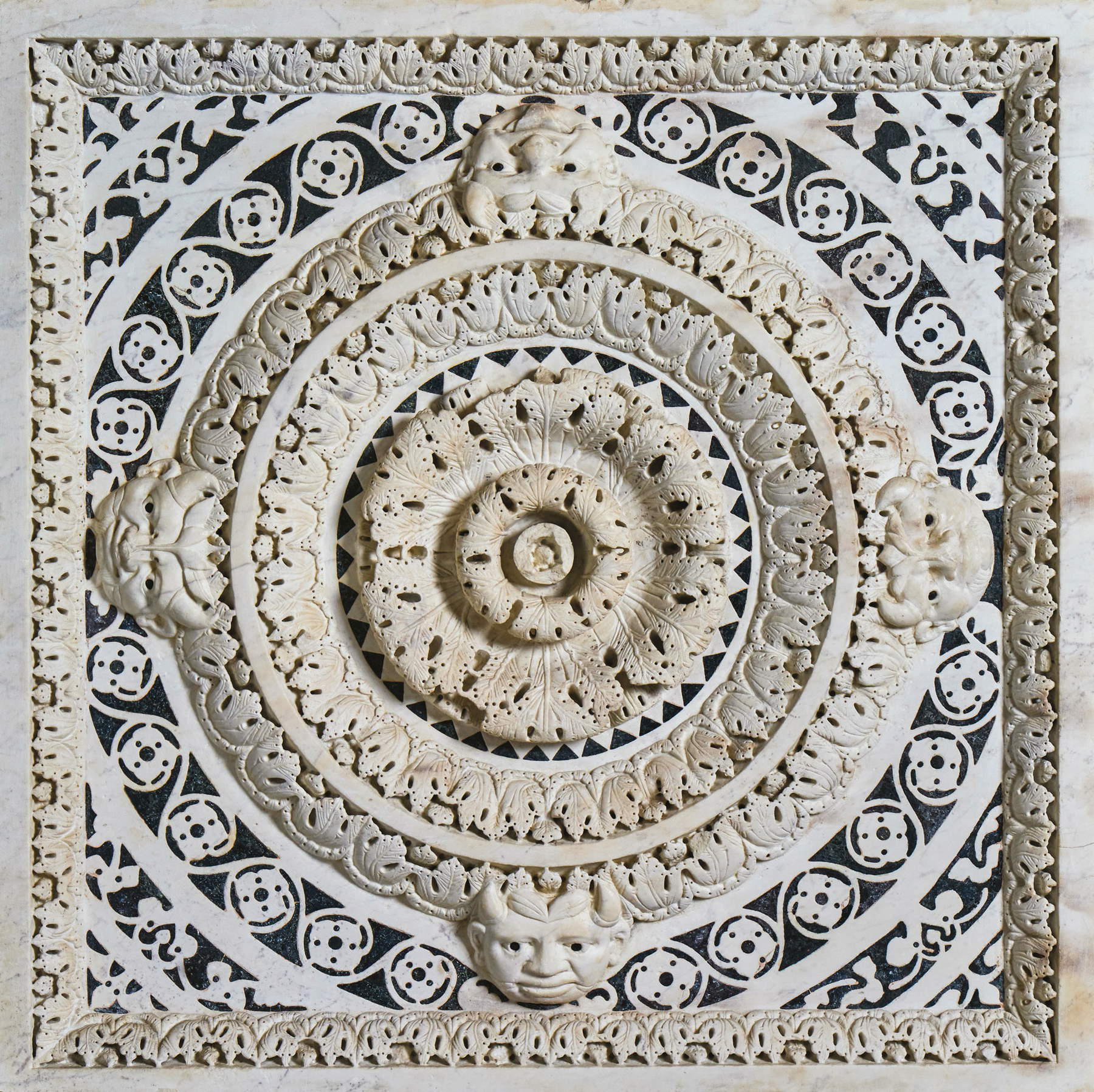
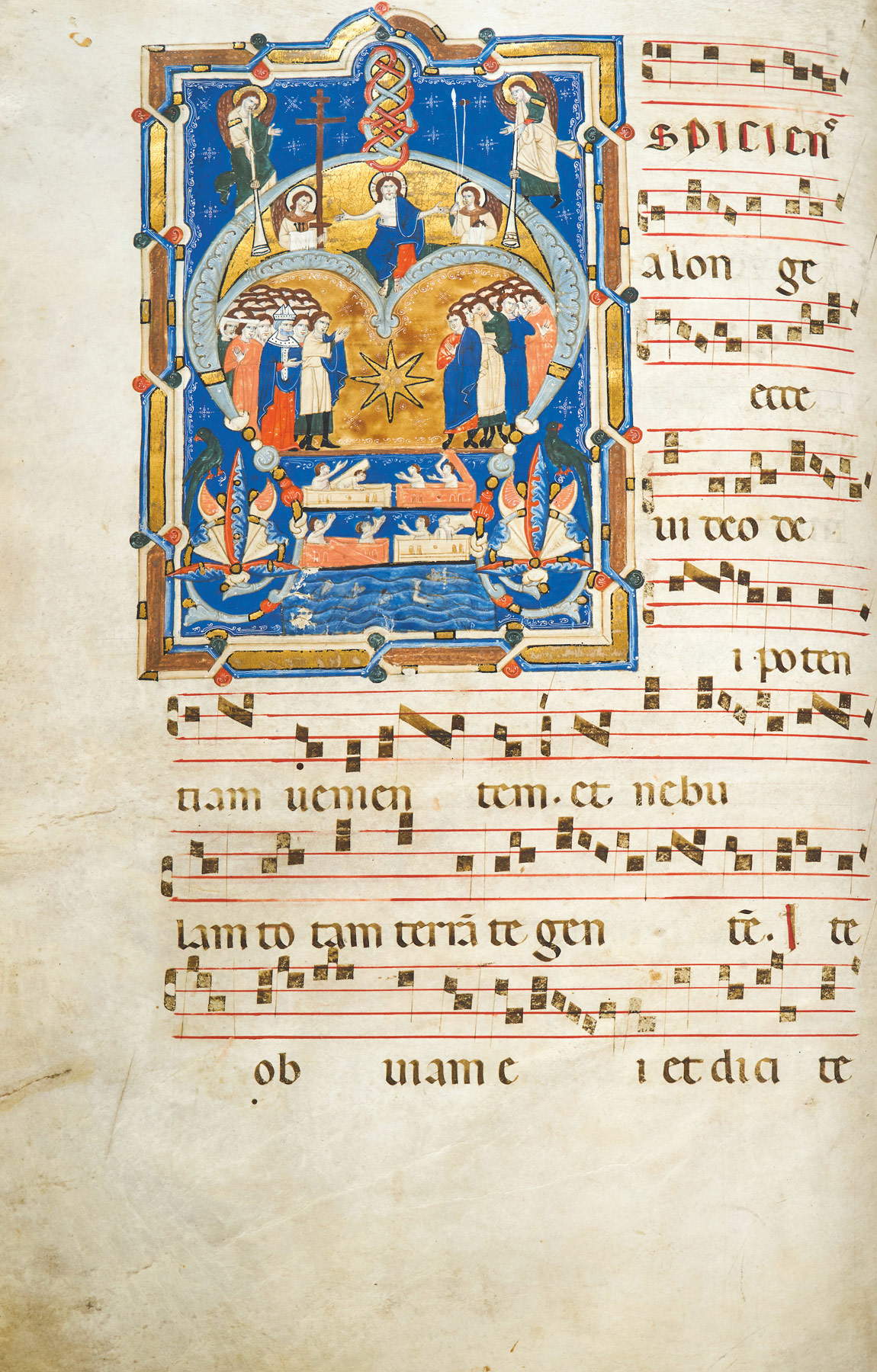
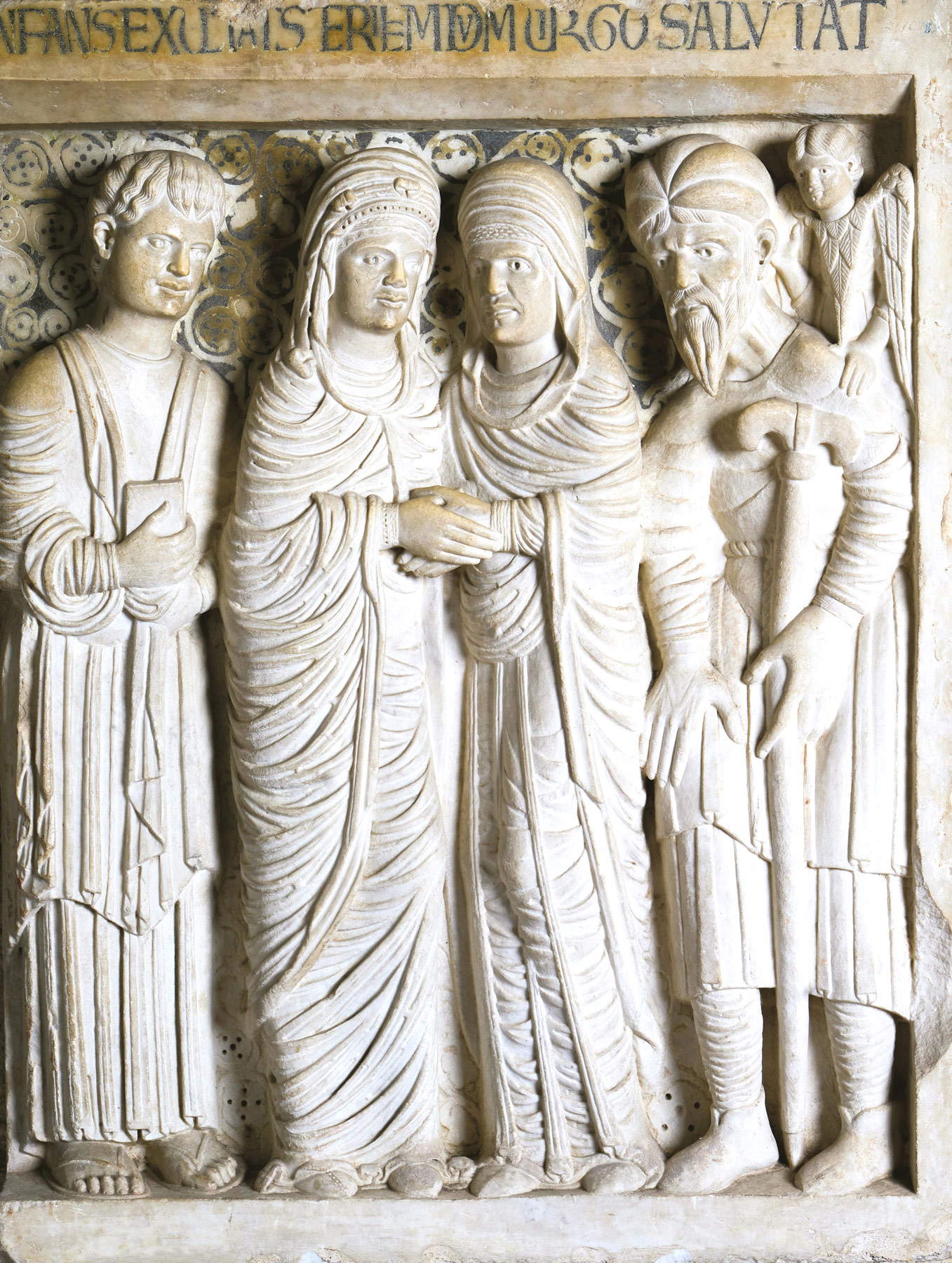
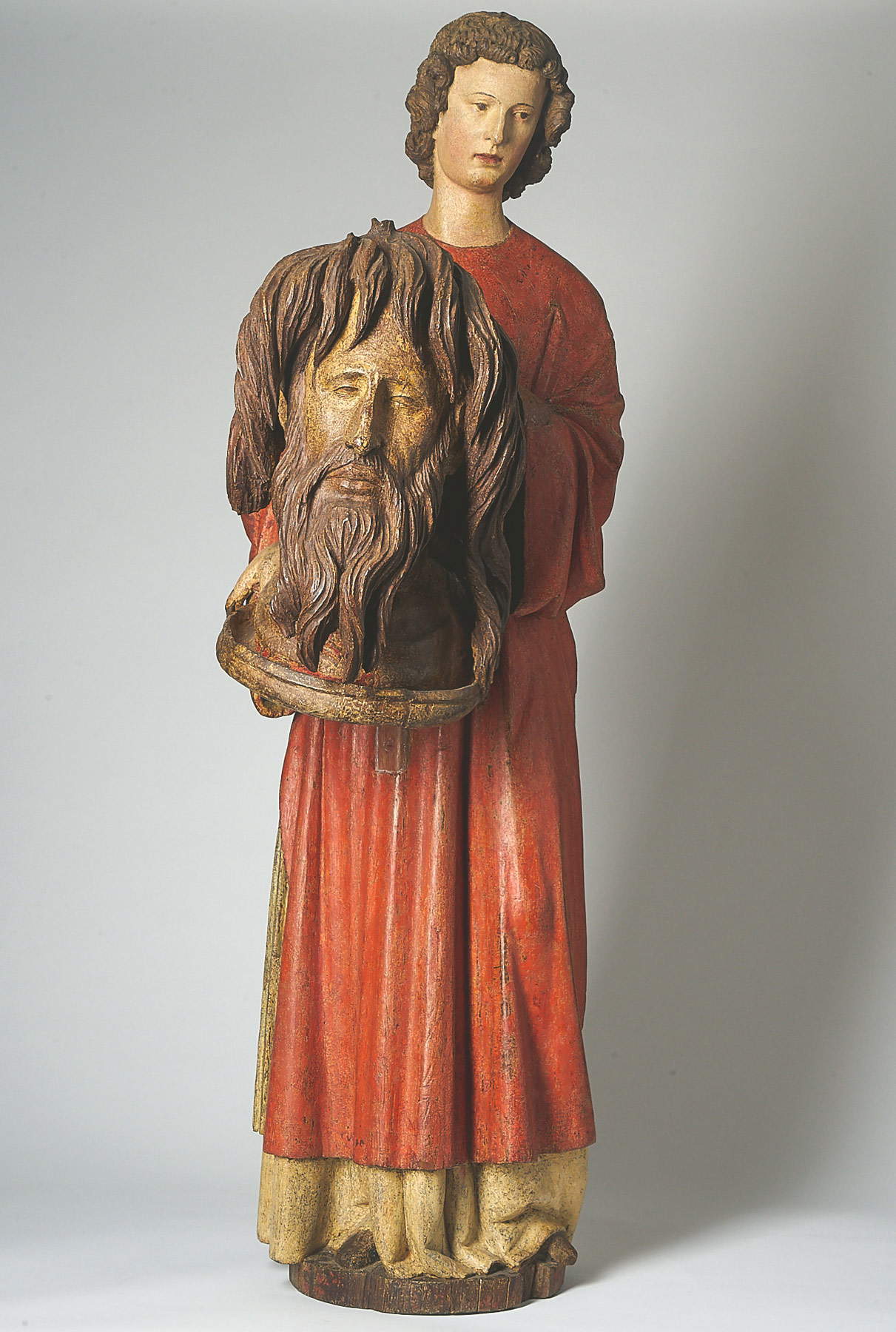
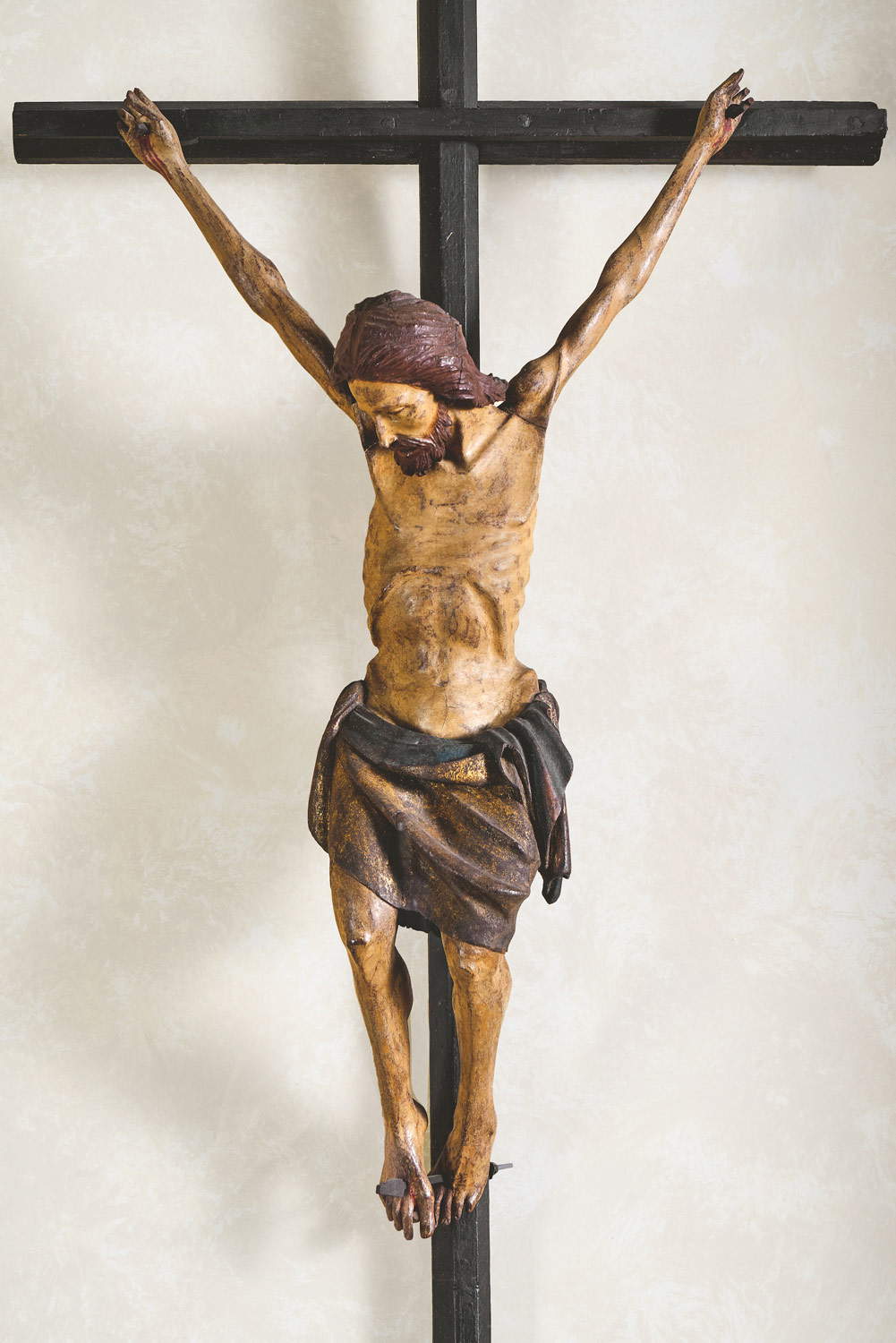
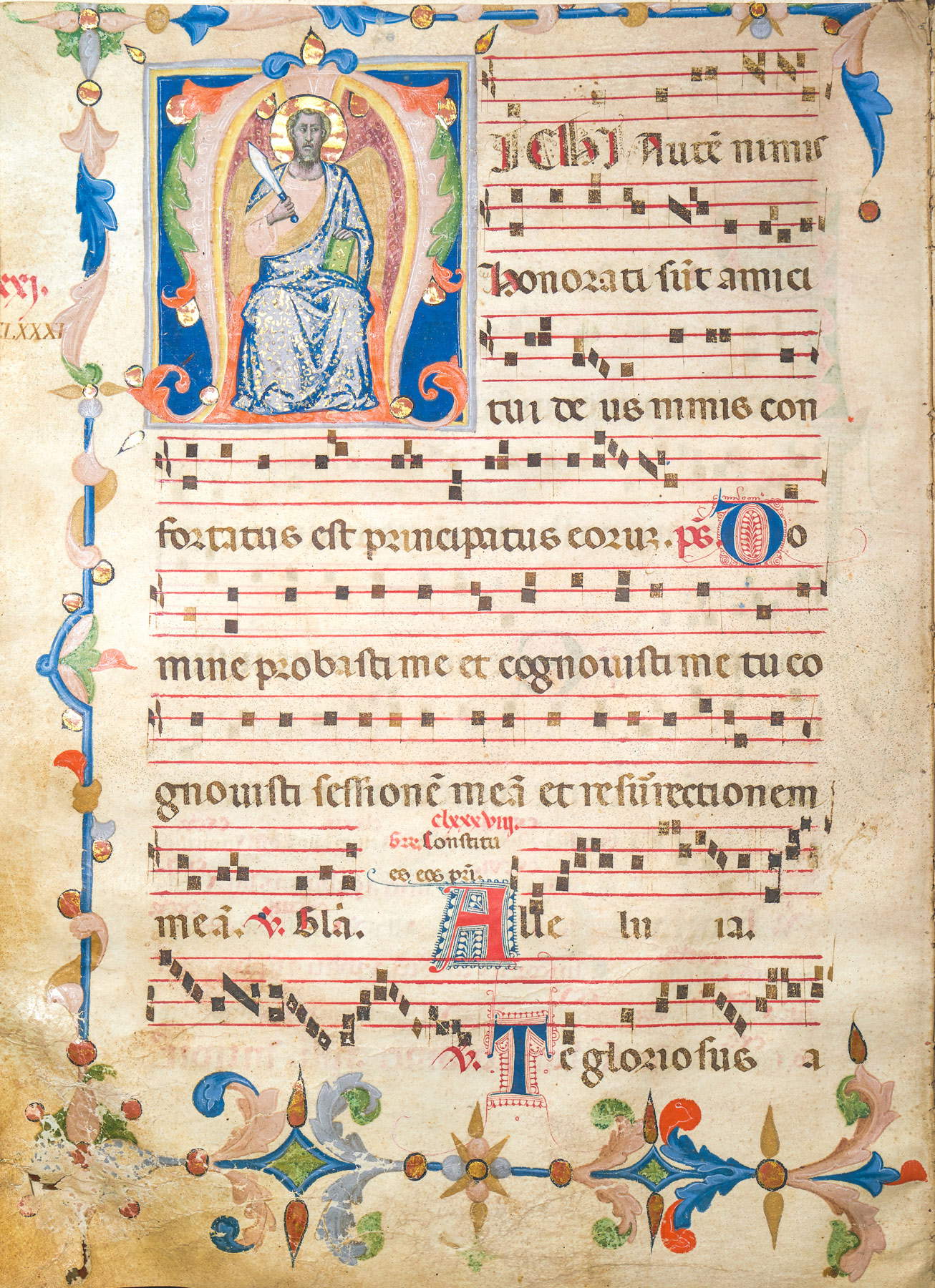
Among the major Tuscan cities rich in works of art, Pistoia was a leading protagonist of the figurative culture of the late Middle Ages; but no critically organized exhibition has been devoted to its artistic heritage in recent decades, perhaps due to the lack of a locally born artist to serve as the city’s glory. All the great masters who worked in Pistoia in the late 12th and early 15th centuries were imported artists, sometimes among the most exalted of their period. There were two reasons that attracted them to leave the city foundational masterpieces of art history: to honor the cult of the relic of Saint Jacopo, acquired from Santiago de Compostela in the fifth decade of the 12th century, and to respond to the need, dictated by civic pride, to affirm through the figurative arts the prestige of the city in the face of other centers, such as Florence, which already at the end of the 13th century posed a threat to its autonomy. In response to such cultic and political needs, Pistoia assayed every aspect of artistic production, achieving very high levels: from architecture, painting, miniature, sculpture to goldsmithing, creating its figurative image on their constant dialogue.The exhibition presents sixty-eight works in comparison, created in different techniques, through whose up-to-date study it aims to offer an essay of the concert of the arts that, against the background of an identity masterpiece such as the Silver Altar of San Jacopo, characterized Pistoia by projecting it into the Middle Ages in a European dimension.
The exhibition begins with the arrival of the relic of St. Jacopo, making Pistoia an obligatory stop on the most important devotional path of the time, begins the renovation of the main churches, starting with the Cathedral of San Zeno. The first section exhibits works from the 12th century, a time when the Pistoia area was already predisposed to cross very different languages. In contrast to contemporary paintings of iconic severity(Madonna and Child from the Civic Museum, from San Matteo), the fragment exhibited here (Escape to Egypt), belonging to the ancient fresco decoration of the Cathedral crypt, is notable for its narrative timbre and luminous colors. Expressive affinities with the Escape to Egypt fresco characterize the miniatures of the spectacular Bible from the Cathedral (Rome, Biblioteca Casanatense), a witness to the wealth and prestige of the canons of San Zeno. We then move on to the thirteenth century, the city’s golden century, during which Pistoia gained a leading role in the figurative arts scene internationally. Although politically weak, in part because of the modest size of its territory, the city had relations with the major European trading centers. It is an era in which great artists are present: the Master of the Cross 434 of the Uffizi, who with the collaboration of the Master of Santa Maria Primerana painted one of the first hagiographic panels of St. Francis (Pistoia, Museo Civico), Andrea di Jacopo d’Ognabene, probable author in 1287 of the first nucleus of the Silver Altar of St. Jacopo, and also Nicola Pisano, perhaps called to Pistoia by the Friars Minor soon after 1270 to erect the tomb of an important prelate, Filippo archbishop of Ravenna. Then again Fra Guglielmo, and the Florentine Coppo di Marcovaldo, who was engaged in the decoration of the chapel of San Jacopo, and who found a valid Pistoiese follower in Manfredino di Alberto, the presumed author of the frescoes in the apse of Santa Maria a Ripalta and San Bartolomeo in Pantano, influenced by Cimabue and established in Genoa in the last decade of the thirteenth century.
We then move on to the early fourteenth century, when Giovanni Pisano produced the pulpit of the church of Sant’Andrea, an absolute masterpiece of the European Middle Ages in which he implements the synthesis of doctrinal conception, compositional structure and style. In Pistoia, Giovanni Pisano also left two Crucifixes “in piccolo” (Sant’Andrea, Santa Maria a Ripalta), as a seal of his presence, and the Angel with the Head of the Baptist (formerly in the Baptistery), all on display in the exhibition. In painting, the very diverse artistic landscape is populated by personalities of remarkable level and originality. The native figure who excels is the Master of 1310, who compares with the equally original fresco painter of the presbytery of San Giovanni Fuorcivitas. An echo of political subjugation in Florence is the presence of Lippo di Benivieni, who, a highly personal interpreter of Giottism, leaves in the city the Lamentation over the Dead Christ, one of the greatest masterpieces of early 14th-century Florence, displayed in the Museo Civico section of the exhibition itinerary. In the field of miniatures, too, the evidence points in the direction of Florence. A privileged referent is the workshop of the leading artist in Florentine book production, Pacino di Bonaguida, who in the Graduale di Popiglio (Museum of Sacred Art) offers an elegant version of his composed figurative classicism. Also in the wake of Florentine developments is the important Master of the Civic Majesty of Pistoia, present with the youthful polyptych in the Pinacoteca di Empoli. Sculpture has its golden decade between 1330 and 1340; the in-progress construction of the Baptistery and the discovery of the body of Bishop Atto contribute to it.
The process of the city’s political, commercial and cultural subjugation to Florence had come to maturity since the latter part of the thirteenth century: it was sanctioned in a highly symbolic way in 1296 by the new Statute of the Podestà drawn up directly by the Florentine government. However, it was from the second quarter of the fourteenth century that Florentine painting asserted its pre-eminence in the city’s artistic landscape. Giovanni di Bartolomeo Cristiani himself, the main autochthonous protagonist, in addition to having entertained according to the archival documents known to us a collaborative relationship with Nardo di Cione, carried out his activity mainly in reference to Florentine artistic events. The presence in the exhibition of Pietro Lorenzetti ’s Madonna and Child Enthroned with Angels from the Uffizi, from the church of San Francesco in Pistoia, seems to keep up interest in the Sienese artists, but in fact the artistic scene is now dominated by the Florentines, owing to the intense activity in fresco decoration of the direct followers of Maso di Banco, Alesso di Andrea and Bonaccorso di Cino. Shortly after the middle of the century, Taddeo Gaddi (polyptych of San Giovanni Fuorcivitas, on display) asserted the definitive Florentine cultural dominance, later popularized in the city by the activity of Niccolò di Tommaso, and extended also into the field of book illustration. The loss of political autonomy and the final submission to Florence in 1402 set the stage for the season of Late Gothic painting, which in Pistoia asserted itself with distinctive features, in the panorama of Tuscan painting between the 14th and 15th centuries. The protagonist of the city’s artistic scene in the second half of the 14th century, Giovanni di Bartolomeo Cristiani, reproposes in the last decade of the century his delicate language in the triptych preserved in the Museo Diocesano in Milan and displayed in the exhibition, executed in collaboration with Nanni di Jacopo, who was probably his pupil. If Nanni di Jacopo’s juxtaposition of late Gothic suggestions can be seen mainly in the chromatic brilliance or the preciousness of the fabrics that adorn his paintings, the pictorial renewal is promoted with greater conviction by Antonio Vite. The author of vividly expressive depictions, in the years around 1390 Antonio Vite paved the way that would lead to the full affirmation of the late Gothic ferments, whose greatest interpreter was an artist of a younger generation, the Master of the Bracciolini Chapel.
The exhibition continues at the Palazzo Comunale, with a focus on the Maestà Civica, the large fresco on the ground floor of the palace, with the Madonna and Child Enthroned among six angels and Saints John the Baptist, James the Greater (or St. Bartholomew), Zeno and John the Evangelist (?), one of the most remarkable examples of monumental painting in Pistoia in the first half of the 14th century, and with the section on the second floor, in which some of the key works for artistic developments in Pistoia from the 13th to the 15th century can be admired, such as the splendid panel carved by Nicola Pisano with the Stigmata of St. Francis, most likely for the funeral monument of Bishop Filippo da Pistoia in the city’s early Franciscan church, along with the cusped altarpiece with St. Francis and eight stories from his life painted for the same church by the Master of the Cross 434 of the Uffizi, and the aforementioned Lamentation over the Dead Christ by Lippo di Benivieni, a masterpiece of this great and highly original Florentine Giottesque painter painted for the church of the Umiliati.
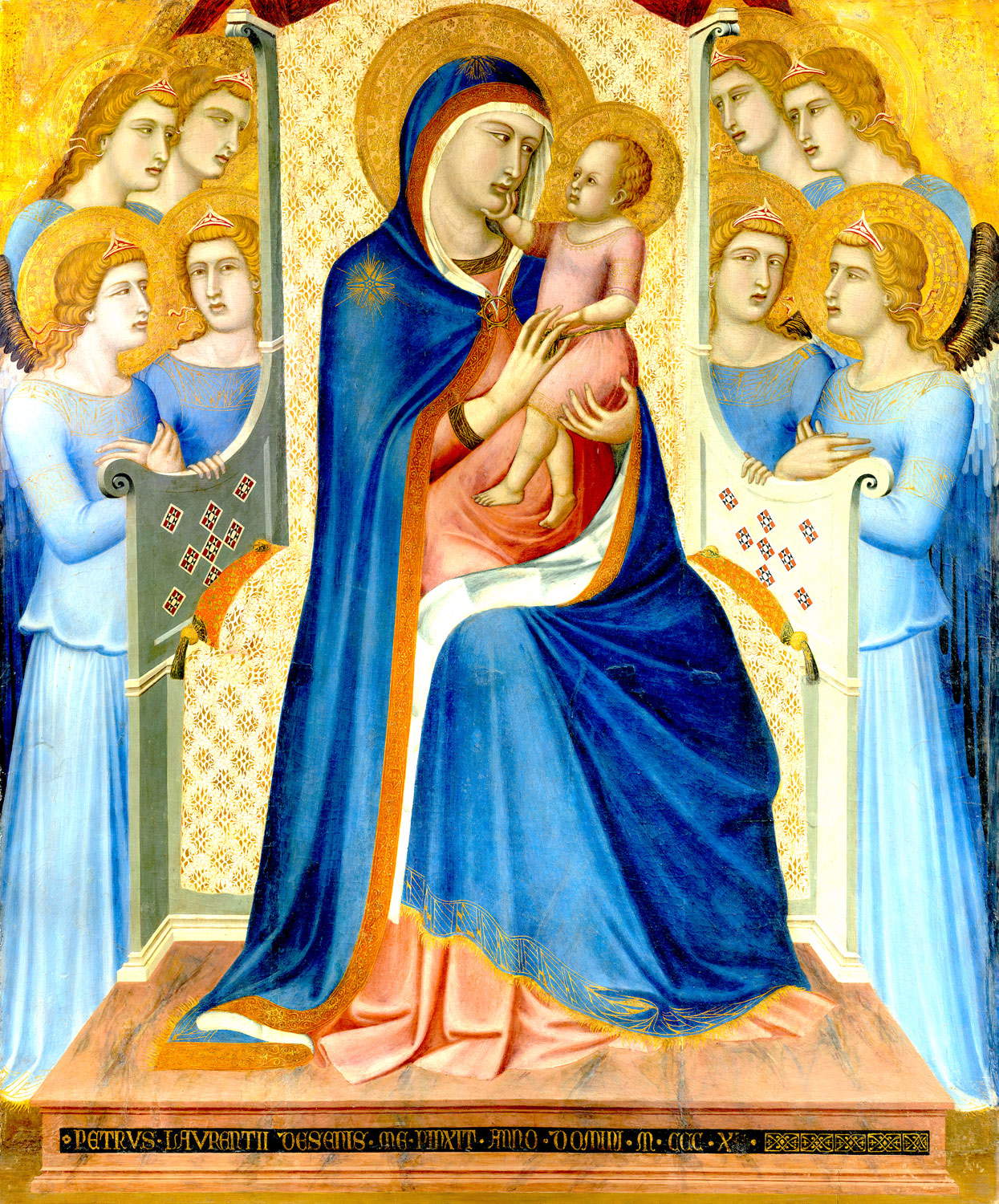
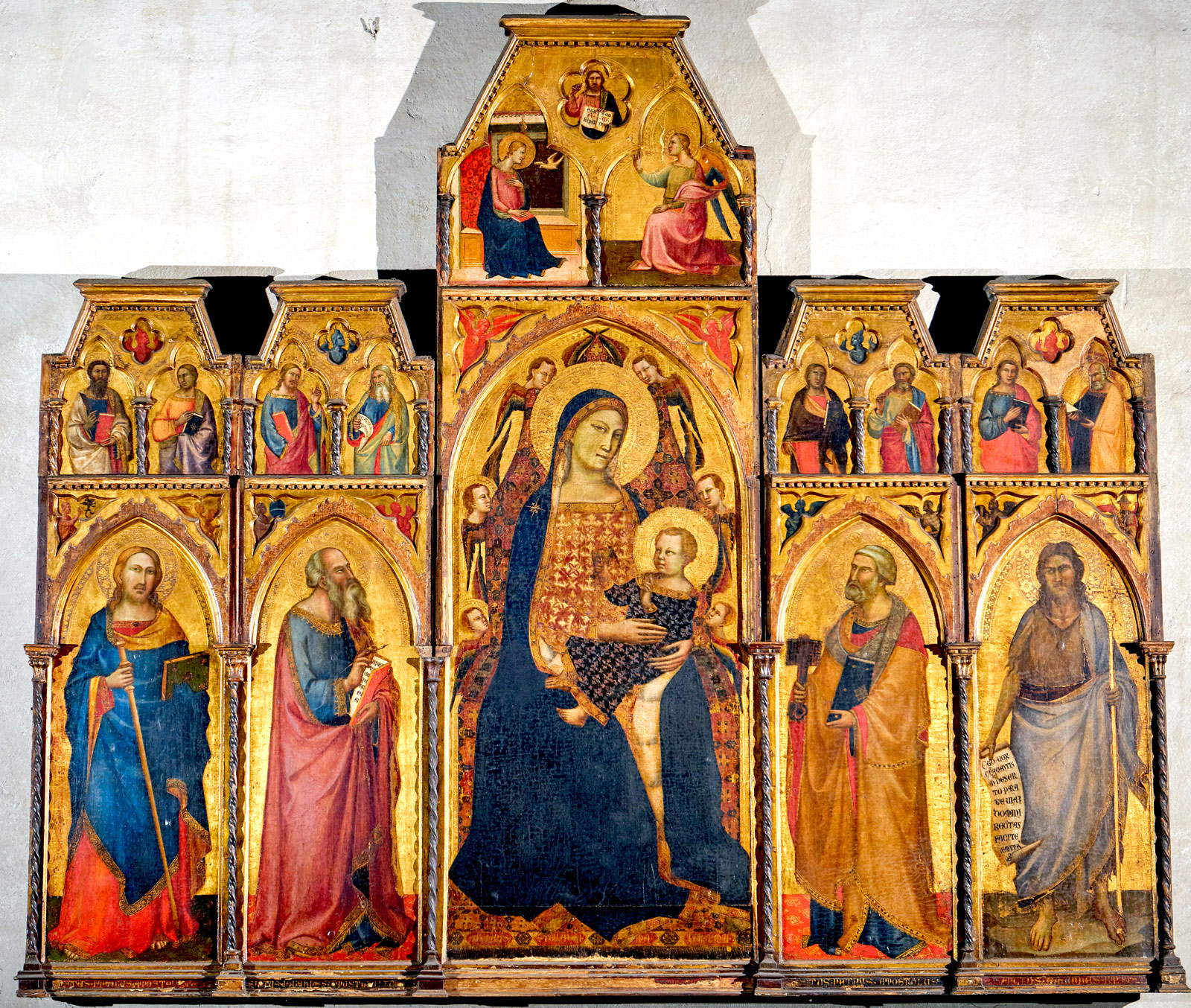
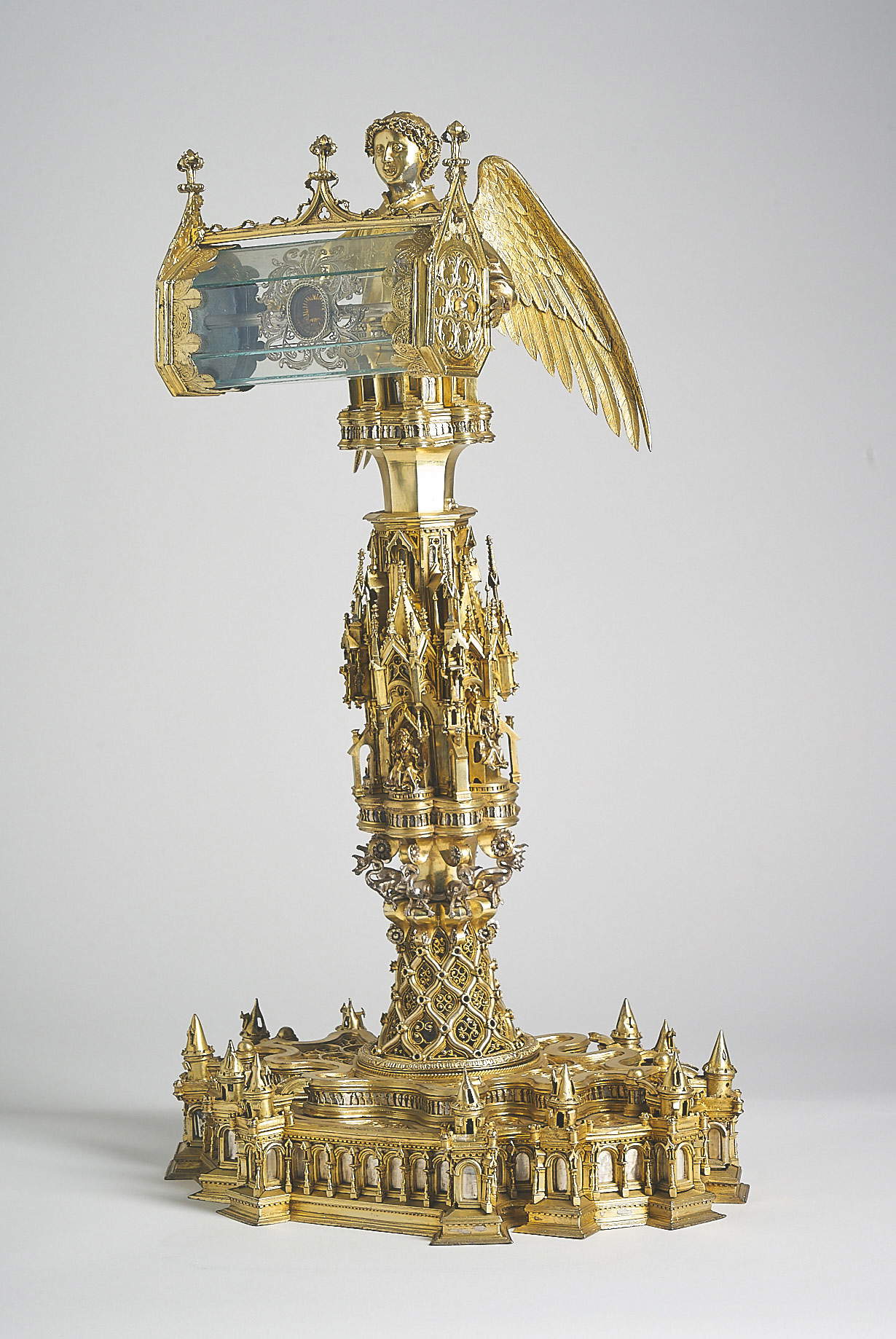
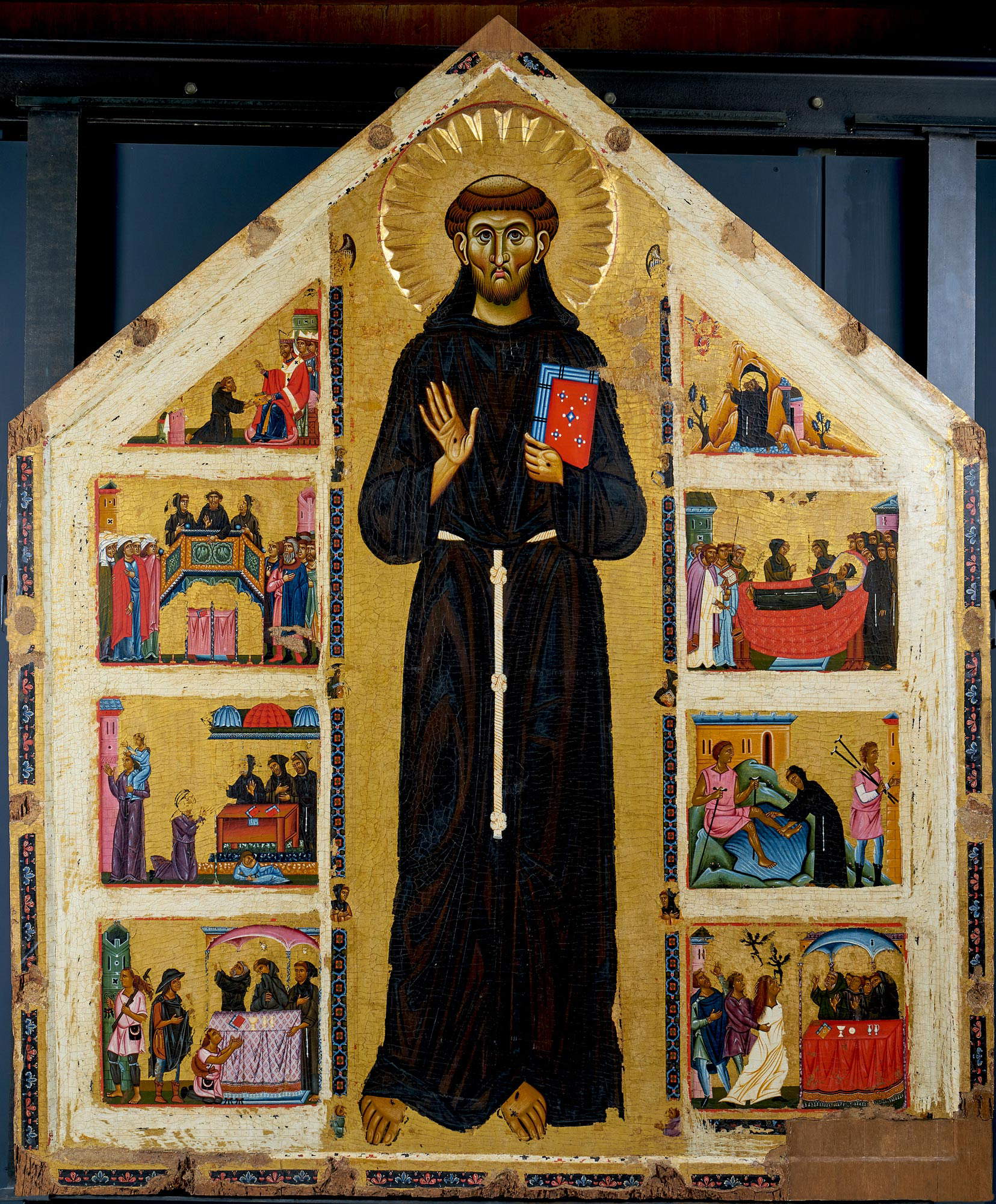
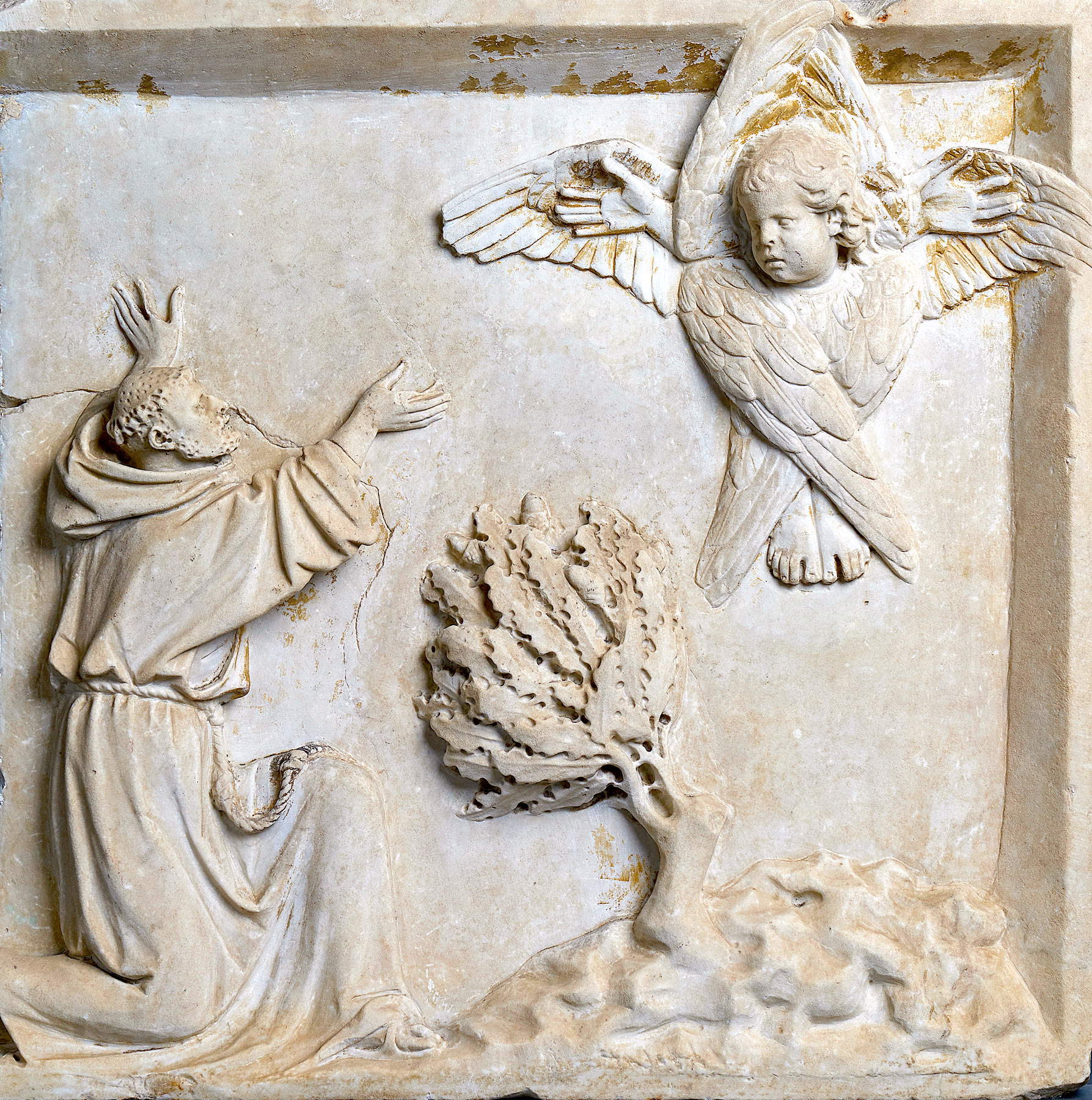
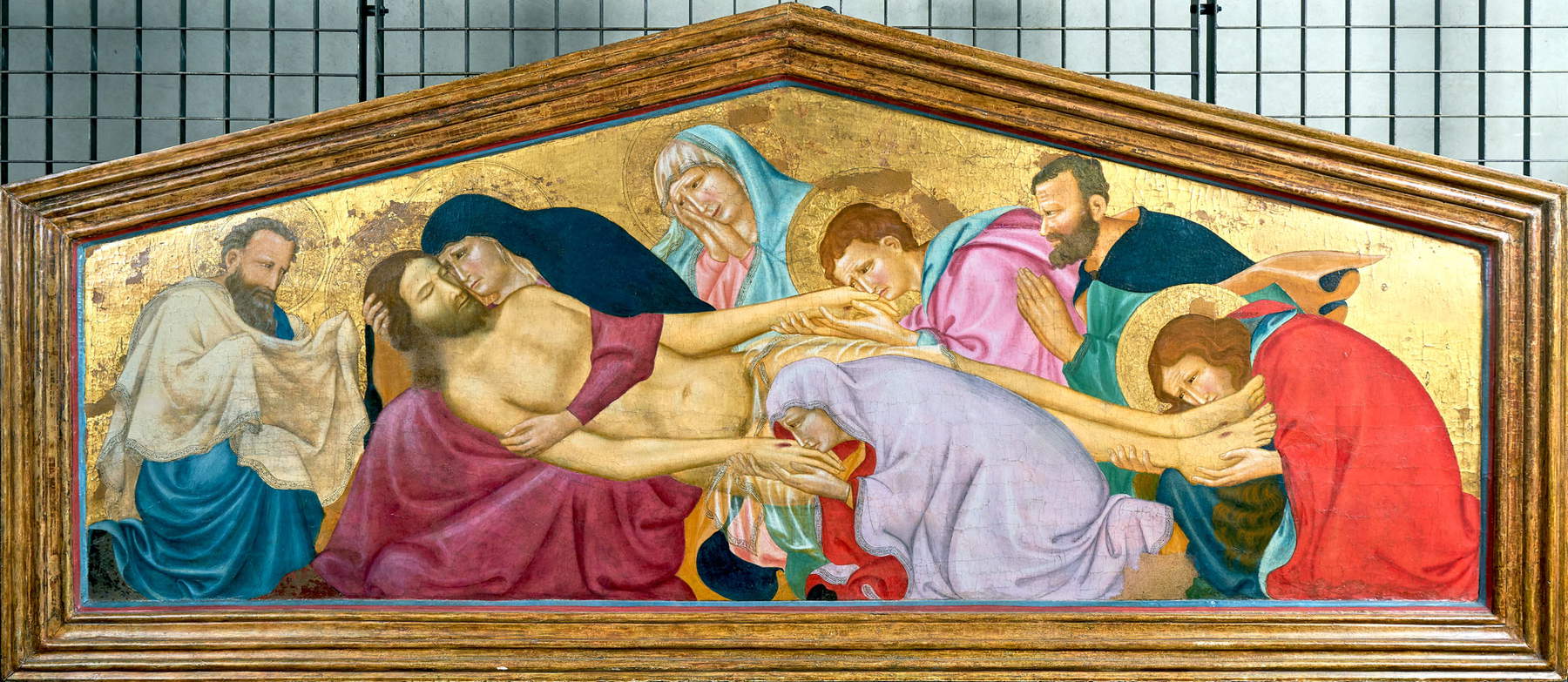
“The preservation, enhancement and promotion of the local artistic and cultural heritage, as well as of its identity and distinctive elements, are among the main objectives that characterize the action of the Fondazione Cassa di Risparmio di Pistoia e Pescia,” says President Lorenzo Zogheri. “And it is also through the activities of its museum system (managed by the instrumental company Pistoia Musei & Cultura scrl and directed by Monica Preti) that our institution pursues these aims, supporting with conviction an important and challenging project, born from the desire to offer the city, its inhabitants and visitors an articulated and attractive program of cultural initiatives, so that Pistoia can highlight and make known its extraordinary artistic heritage. On the furrow of this path is inserted Middle Ages in Pistoia. Crossroads of Artists between Romanesque and Gothic, an important exhibition that, for the first time, tells the public about the exceptional artistic context that characterized the city between the thirteenth and fourteenth centuries: a period of great splendor consequent also to the important strategic choice made by Bishop Atto in the previous century, who with the decision to bring the relic of St. Jacopo to Pistoia succeeded in establishing the balance and alliance between political and religious power, increasing the economic prosperity of the city thanks to the considerable influx of pilgrims who arrived there to venerate the saint.”
“The goal of the curators of the exhibition,” stresses Monica Preti, director of Pistoia Musei, “was to present a critical picture of the history of the arts in Pistoia from the 12th to the early 15th century against the backdrop of the cult paid to Saint Jacopo. To this end they have relied on a historiography that has been greatly enriched, in recent years, although it has never translated into an exhibition undertaking such as the one witnessed by this catalog. And yet, Pistoia in the Middle Ages had assumed a leading role in the field of figurative arts, such as to allow the city to compare itself worthily as early as the second half of the thirteenth century - in terms of the importance of its monuments and the quality of the related furnishings - with the major centers of Tuscany, in a very competitive context. After all, strongly projected into an extra-local dimension had been the entire policy of Bishop Atto, who in 1140, in order to recompose the conflicts that undermined his authority, did not hesitate to bring to Pistoia a relic of the body of the apostle Jacopo da Compostela, a seal of civic devotion and the first impulse of the city’s inclusion in the network of the main pilgrimage routes, with all the religious, economic and artistic consequences that this entailed. The works brought together on this occasion, also thanks to important national and international loans, prove all the more interesting for the dense web of relationships that bind them (by affiliation or various affinities) to the masterpieces preserved in Pistoia’s churches and museums. The exhibition (which has its nucleus in the rooms of the Ancient Palace of the Bishops, which is flanked by a section at the Civic Museum of Ancient Art) thus becomes the fulcrum of a multi-voice dialogue involving all the medieval monuments of the city and its vast territory, projecting itself on multiple paths that we hope will be able to contribute to the rediscovery of the figurative fabric of one of the most important centers of the Italian Middle Ages, characterized by cultural and cultic choices of European scope.”
“The Municipal Administration,” says Mayor Alessandro Tomasi, “could not but welcome with great satisfaction and a concrete collaborative spirit an event of such importance, realized by Pistoia Musei and also aimed at ascertaining the leading role assumed in the Middle Ages by the city in the field of figurative arts. In addition to the loan of six works, temporarily transferred from the Civic Museum and the Forteguerriana Library to the rooms of the Ancient Palace of the Bishops, through a specific collaboration agreement we wanted to contribute to theorganization and promotion of the exhibition by ideally linking to the main exhibition venue the masterpieces in the first room of the Civic Museum (from Nicola Pisano’s tile with the Stigmata of St. Francis to the majestic Franciscan altarpiece, from the gold backgrounds of Lippo di Benivieni and the Master of 1310 to the two panels by Mariotto di Nardo and Rossello di Jacopo Franchi from Giaccherino, all of which are faithful, visible mirrors of the artistic history of the city precisely in the period outlined by the exhibition) and the room on the first floor of the Palazzo Comunale, in which the great fresco by the Master of the Civic Majesty of Pistoia is located; but also by participating in the production of the agile publication illustrating some itineraries to discover the medieval art of Pistoia scattered throughout the city.”
“This exhibition,” points out Monsignor Fausto Tardelli, bishop of Pistoia, “wants precisely to bring to memory this Pistoian Middle Ages of art and culture, in which the splendors of the gold backgrounds, the meticulous and refined workmanship of the goldsmiths, the modeling of the sculptures and the imaginative decorative richness of the manuscripts are put at the service above all of faith and its truth. And it does so partly also in that admirable architectural setting given by the splendid churches built in that ’middle time’ and which still make the city splendid today.”
“Enhancing the artistic and cultural heritage of our country is the best way to be close to the community. For us at Conad Nord Ovest,” stresses General Manager Adamo Ascari, “being a company in the community, rooted in the territory where it operates daily with its Members, means creating value, sharing and promoting the excellence of our territory and protecting our traditions. With conviction, we support this important project that was born with the idea of bringing alive and enhancing the extraordinary artistic and cultural heritage of Pistoia with initiatives of participation and personal enrichment, offering relevant experiences for the entire community. The panorama of the arts in Pistoia from the 12th to the early 15th century represents a precious heritage that for the first time will tell the public, as in a single concert, about the leading role the city assumed in the Middle Ages in the field of figurative arts.”
“Among the major Tuscan cities rich in works of art, Pistoia was a leading protagonist in the figurative culture of the late Middle Ages,” the curators explain. “In a historical period such as the current one in which exhibitions rage, no exhibition since the one dating back to 1950 had been organized to reconsider its artistic heritage in its various aspects, in the light of the critical balance of foundational studies that have never stopped. The city’s need to visually compare its artworks has never been triggered perhaps because Pistoia has lacked a local artist in whom it could recognize itself, celebrating him with a glance at its past and one at its legacy. Or perhaps because the city itself has presented itself over the centuries, and especially in the Middle Ages, as a laboratory of artistic experience in all fields of art history, deeply motivated by cultic and political reasons. All the great masters who worked in Pistoia in the late 12th and early 15th centuries were imported artists, sometimes among the most exalted of their period. There were two reasons that attracted them to leave the city foundational masterpieces in the history of art: to honor the cult of the relic of Saint Jacopo, acquired from Santiago de Compostela in the fifth decade of the 12th century, and to respond to the need, dictated by civic pride, to affirm with the figurative arts the prestige of the city in the face of other centers, such as Florence, which already at the end of the 13th century represented a threat to its autonomy. Despite the presence of great personalities in sculpture, painting, miniature and goldsmithing, who individually created absolute masterpieces, paradigmatic in art-historical manuals, Pistoia is connoted for having valued every artistic expression at the same level. The exhibition catalog and the exhibition itself reveal the concert of the arts that the city has pursued, since each artistic artifact seems to have come into being primarily for two reasons: the awareness of gaining prestige through the work of art and the desire to create the masterpiece as a function of celebrating the tangible signs of the city’s cult to St. Jacopo, which have become a hallmark of Pistoia’s identity. The curators, sensing this peculiarity, set themselves the goal of making the arts dialogue on an equal footing, arriving at an updated critical historical balance on the basis of research conducted in synchrony between the philological method of attributive punctuation, for the correct understanding of the works, and the historical method for their interpretative framing.”
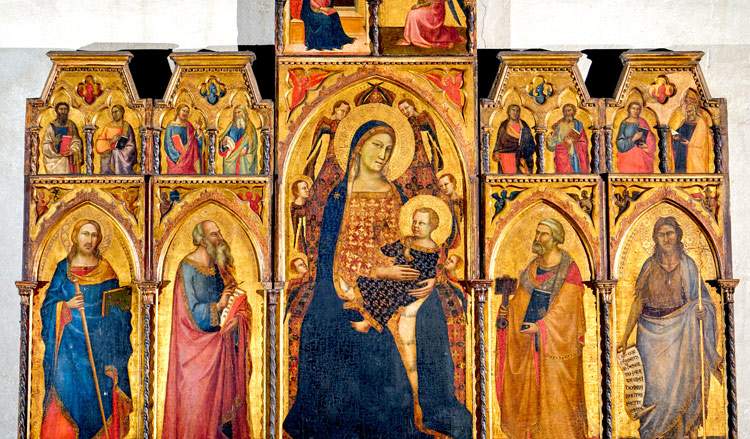 |
| Middle Ages in Pistoia, for the first time a major exhibition on medieval art in the Pistoia area |
Warning: the translation into English of the original Italian article was created using automatic tools. We undertake to review all articles, but we do not guarantee the total absence of inaccuracies in the translation due to the program. You can find the original by clicking on the ITA button. If you find any mistake,please contact us.